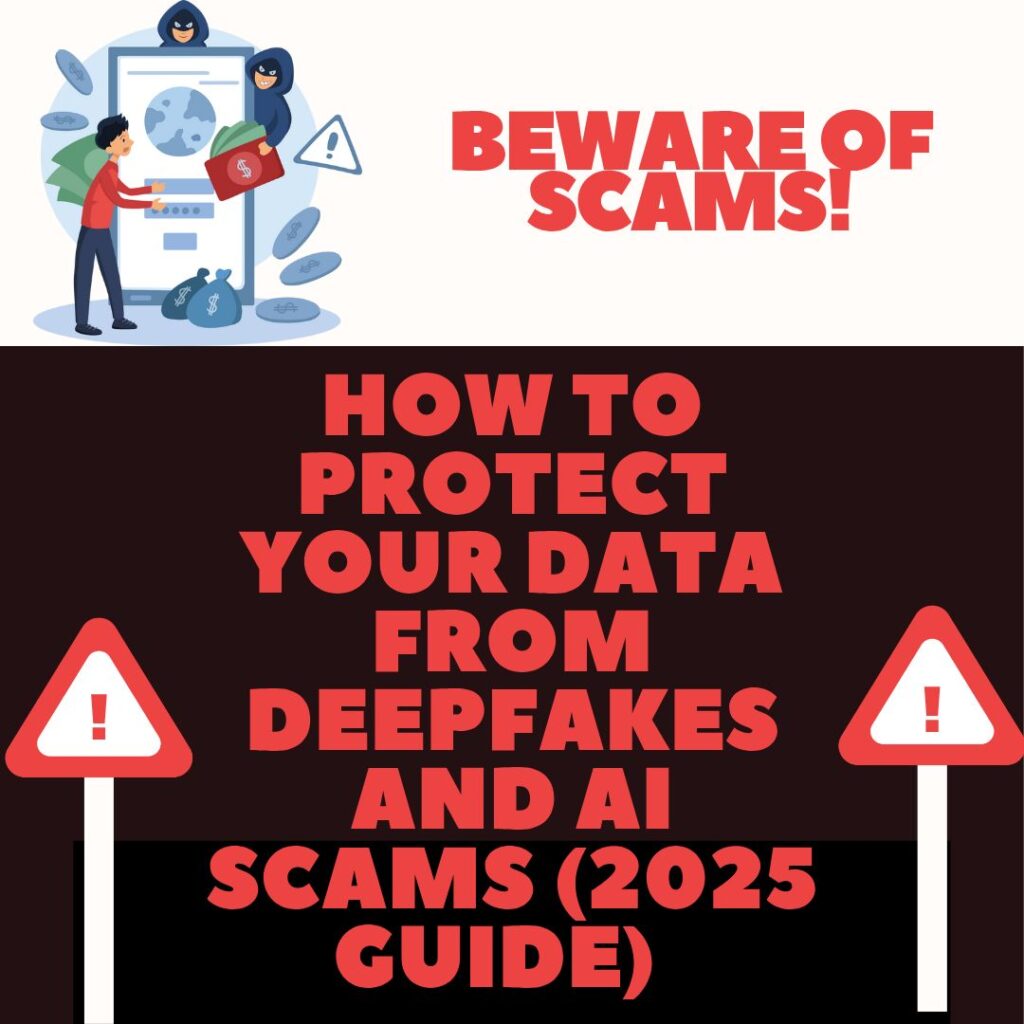
How to Protect Your Data from Deepfakes and AI Scams (2025 Guide)
With AI-generated deepfakes and scams becoming more sophisticated, protecting your personal data has never been more critical. From fake videos to AI voice cloning, cybercriminals are exploiting these tools for fraud, identity theft, and misinformation.
This guide covers everything you need to know—from spotting deepfakes to securing your online presence—with real-world Q&A to help you stay safe.
🔍 Frequently Asked Questions (FAQs) About Deepfakes & AI Scams
1. What are deepfakes, and how do they work
Deepfakes use AI (like generative adversarial networks or GANs) to create hyper-realistic fake videos, images, or audio. They can impersonate celebrities, politicians, or even your family members to spread scams.
2. How are criminals using AI for scams?
-Voice cloning scams: AI mimics a loved one’s voice to demand money.
✓Fake video calls: Fraudsters use deepfake video in Zoom or WhatsApp calls.
✓Financial fraud: Fake CEO videos trick employees into wire transfers.
✓Blackmail & misinformation: Fake nudes or fake news used for extortion.
3. How can I spot a deepfake or AI scam?
✓ Look for odd facial movements (blinking irregularities, stiff expressions).
✓Check audio mismatches (unnatural pauses, robotic tones).
✅ Verify through a second channel (call the person directly if they ask for money).
✅ Use AI detection tools (like Intel’s FakeCatcher or Microsoft’s Video Authenticator).
4. What’s the most dangerous AI scam in 2025?
✓Virtual kidnapping”—scammers clone a family member’s voice, claim they’re in danger, and demand ransom. Always ✓- verify emergencies via a secret family code word.
🛡️ How to Protect Yourself from AI Scams
1. Secure Your Online Data
– ✓Limit social media exposure (avoid posting voice samples or high-res videos).
– ✓Use strong, unique passwords + ✓two-factor authentication (2FA).
-✓Opt out of facial recognition databases where possible.
2. Detect & Report Deepfakes
– ✓ Reverse-image search suspicious media (Google Lens, TinEye).
-✓ Report scams to platforms (Meta, Twitter, banks) and authorities (FTC, IC3).
3. Educate Friends & Family
-✓ Warn them about AI voice scams and fake emergency calls.
-✓ Set up a family safety code for verifying urgent requests.
4. Use AI Protection Tools
✓Truepic > Detects AI-generated images.
✓Pindrop > Prevents voice fraud.
✓Reality Defender > Scans videos for deepfakes.
🚨 Real-Life Examples of AI Scams (2024-2025)
– A Hong Kong finance worker transferred $25M after a deepfake CFO ordered it.
– A U.S. mother sent $15,000 after hearing her “daughter’s” AI-cloned cry for help.
– Scammers used a fake Elon Musk video to promote crypto Ponzi schemes.
💡 Final Tips**
✔ Assume any unusual request could be fake—always double-check.
✔ Don’t share voice notes or videos publicly—they can be cloned.
✔ Stay updated on AI scams—follow cybersecurity blogs (Kaspersky, Wired).
Bottom line: AI scams are evolving, but awareness and smart habits can keep you safe. Share this guide to protect others! 🚀

